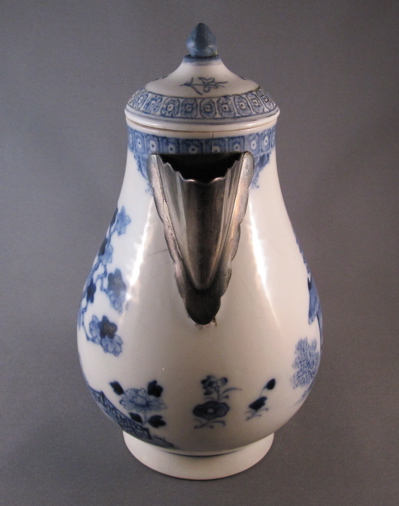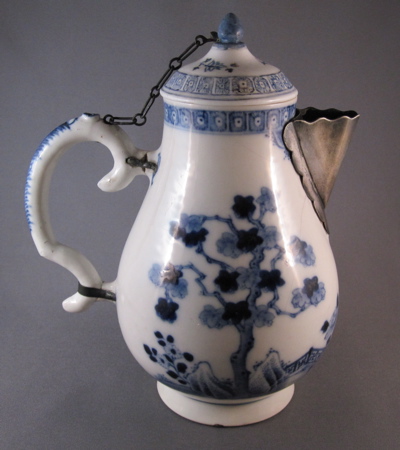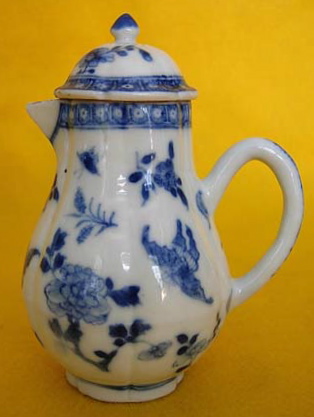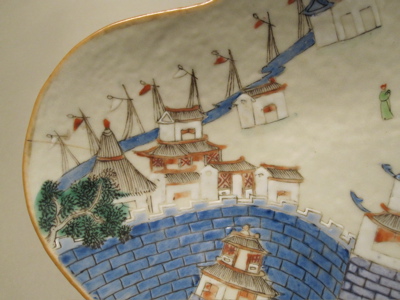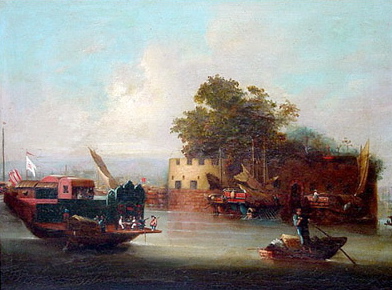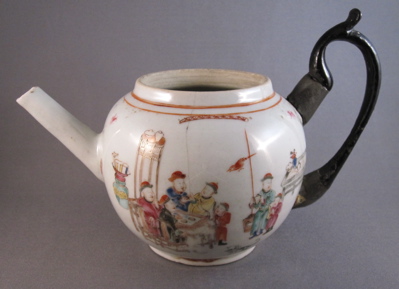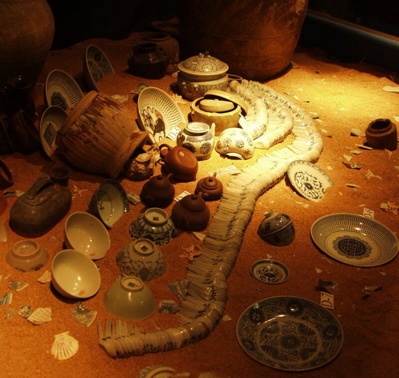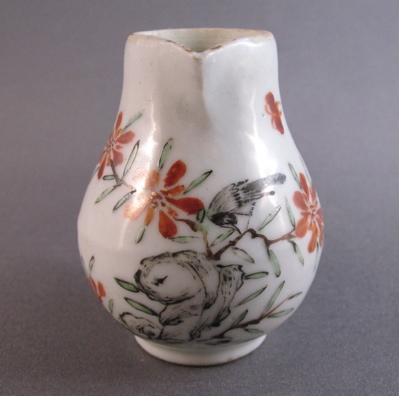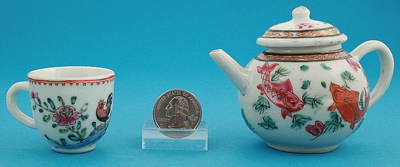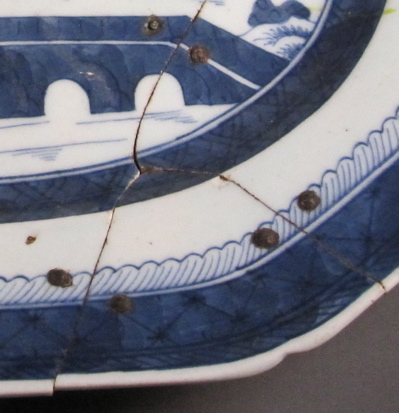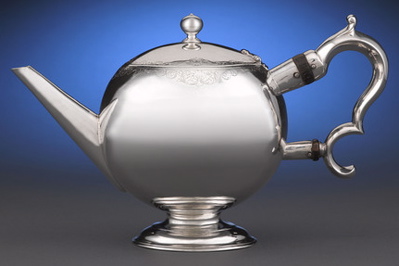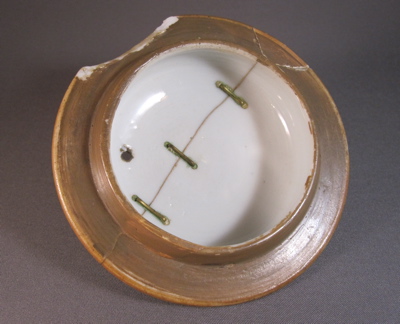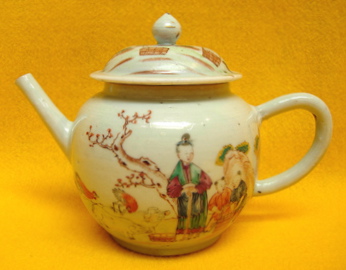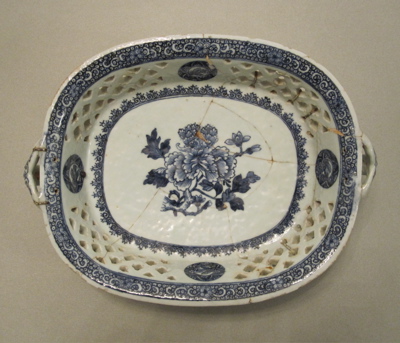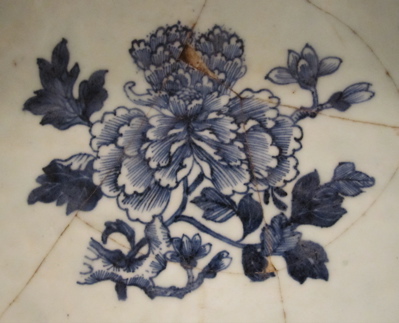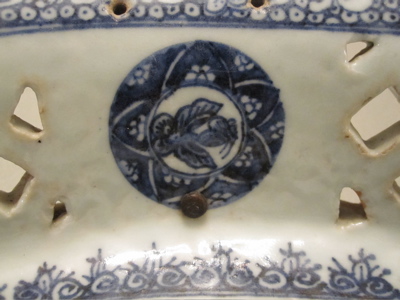This Chinese export porcelain cylindrical form mug is decorated in the Rose Mandarin style with polychrome underglazed enamels. It is painted using the Famille Rose palette and has stylized flowers and a domestic scene
Over the past 260 years or so, this ceramic survivor sustained a life of clumsy owners, resulting in many large chips along the rim and a broken handle
Mug stands 4-1/2″ tall
The once separated handle is now held tightly in place with the aid of two small metal rivets, repaired in the 1800’s by an itinerant mender
This Chinese ceramic mug with similar form has an intact handle and no chips
Photo courtesy of Artifact






